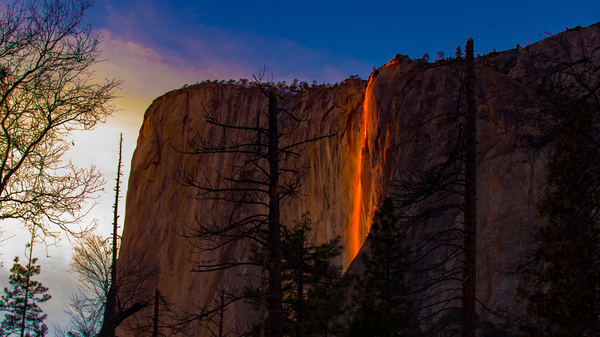Mirages vs. Optical Illusions
Mirages are created by atmospheric conditions, while optical illusions are created by our minds.

A wet highway on a dry day is a mirage, but a Moon that seems to change size during the night is an optical illusion.
©iStockphoto.com/driving
Mirages: Shimmering Water on the Road Ahead
How many times have you seen a distant shine on the highway while driving on a hot day? It seems real, but you never seem to get closer to the wet pavement as you speed along; it just stays on the horizon.
That vision of a pool of water on the road is known as an inferior mirage, a phenomenon caused by atmospheric refraction.
Conditions That Bend Light
What causes atmospheric refraction? The short answer in this case is heat and bending light.
To create the highway water mirage, the Sun makes the surface hotter than the air above it. This temperature difference causes light rays to bend, and makes the image of the sky appear where the road should be.
So we’re not actually seeing wet asphalt, we’re viewing a reflection of the blue sky. Then our minds take over and interpret that vision as a sheen of water on the road.
Superior and Looming Mirages
Refraction can create other types of mirages as well. When the air gets hotter as you rise off the ground, you might see a superior mirage, where an object in the distance may appear to float above the surface. These conditions, known as a temperature inversion, can also create the phenomenon of looming, where something that is usually hidden below the horizon can seem to be lifted above it.
Superior mirages happen because a temperature inversion bends light rays downwards, making an object appear to hover above its true location. You're most likely to see these types of mirages in frigid arctic regions, because the ground temperature there is consistently cold and the air above it is frequently warmer.

In rare conditions, Horsetail Falls in Yosemite National Park can appear to be on fire, thanks to the reflection of sunset in the cascade.
©iStockphoto.com/beauty
Fire or Water?
Sometimes we can see things that aren't real because of the play of light through the atmosphere. In just the right conditions at the famed firefall in Yosemite National Park, our brains can interpret the orange, gold and red hues of the sunset in the falling water as a flow of lava.
Optical Illusions
Optical illusions, on the other hand, are phenomena that fool our perceptions independent of the role of the atmosphere. We simply imagine we see something different than what is there in reality.
One of the best examples of an optical illusion in nature is how we sometimes perceive the size of the Moon.
At the horizon, our planetary satellite often appears to be larger than when it is high overhead in the night sky. This seems strange, because we know the Moon does not change size.

The Moon images in this illustration are the same size, yet seem different when viewed on the tracks, showing how our minds can distort proportion and distance.
©timeanddate.com
Powerful and Perplexing
Researchers use the Ponzo illusion principle as a clue to understanding why the Moon illusion happens. This effect can be illustrated by a drawing of two lines converging like railroad tracks stretching into the distance, with two Moons of equal size above the tracks.
Because of how our brain is hard-wired to judge distance, the Moons appear to be different sizes, even though they are exactly the same dimensions.
Scientists are still trying to fully understand the Moon illusion. Some theories hold that the foreground of your view of the Moon can trick your brain into imagining it to be closer and larger than it really is.
Perhaps if there are rooftops or a line of trees as a part of your visual field when you look at the Moon, your mind will estimate its size differently than it would if there was nothing in front to create perspective.
Researchers believe this distortion of visual information may result from a default setting in our brains, and this mechanism may be at work as we look at the Moon on the horizon. But there is still much to be discovered about the causes of the Moon illusion.